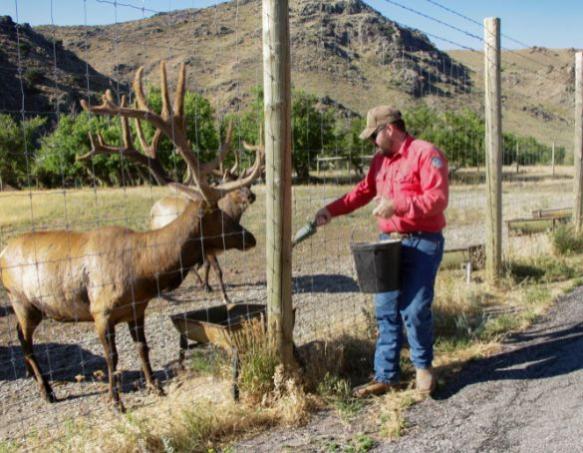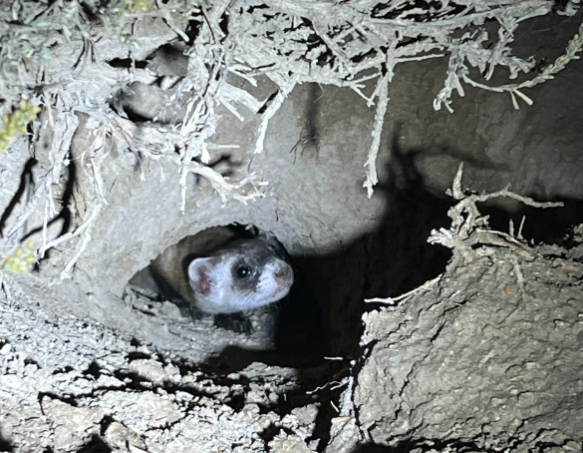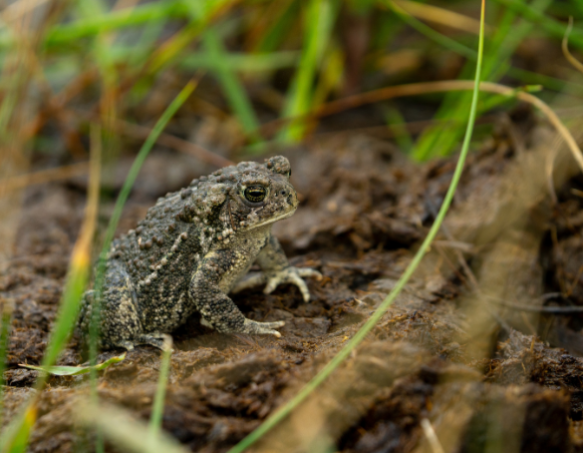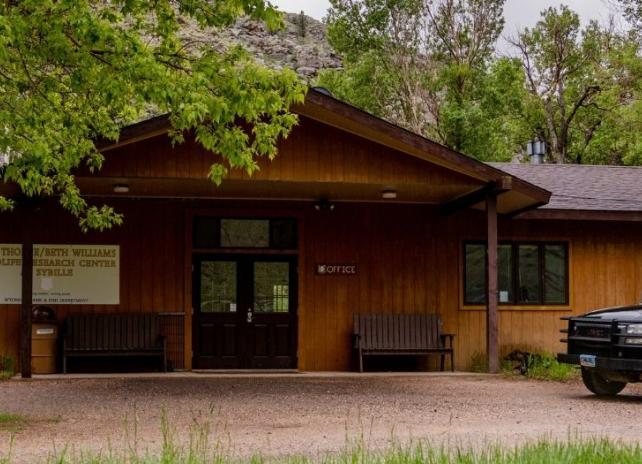
About the Research Center
The Wildlife Research Center at Sybille was established in 1948 with the purchase of 3,081 acres of land known as the Johnson Creek Wildlife Habitat Management Area. The property provided an ideal location for a wildlife research facility, with easy access, adequate space for pastures and holding pens, and diverse terrain, cover, and weather. Construction of the research facility began in 1952.
Sybille was the first research facility of its kind and remains one of the country's leading state wildlife research facilities. Research at the facility focuses on the development of knowledge and techniques that can be directly applied to wildlife management.
Dedicated to Tom Thorne and Beth Williams
In 2005, the Wildlife Research Center at Sybille and the Wildlife Habitat Management Area it sits on were dedicated to Tom Thorne and Beth Williams.
Edwin Thomas (Tom) Thorne was a wildlife veterinarian for the Wyoming Game and Fish Department. He dedicated his career to researching wildlife diseases in Wyoming's big game and aiding the recovery of the black-footed ferret.
Elizabeth (Beth) Storm Williams was a professor in the Department of Veterinary Sciences at the University of Wyoming. She worked on disease issues facing the black-footed ferret and other big game, birds, amphibians, and non-game in Wyoming.
Together, Tom and Beth formed one of the most productive husband-and-wife collaborations in the history of American conservation. The research facility and wildlife habitat management area are together named the Thorne Williams Unit in honor of their contributions to Wyoming's wildlife.

Endangered Species Research - the Black-footed Ferret
The effort to save the black-footed ferret has been a long and cooperative process between state and federal agencies. Long thought to be extinct, a population of black-footed ferrets was discovered in Meeteetse, Wyoming in 1981. In 1987, the wild population was threatened by an outbreak of canine distemper, and the Game and Fish initiated a captive breeding program for the species at Sybille. Conservation efforts at the Wildlife Research Center helped bring the species back from the brink of extinction. In 1996 the Game and Fish transferred the program to the U.S. Fish and Wildlife Service, who moved the ferrets to a new facility near Fort Collins, Colorado.

Endangered Species Research - the Wyoming Toad
Like with ferrets, the effort to save the Wyoming toad has also been a cooperative effort among state and federal agencies and private landowners. Wyoming toads were once abundant in the Laramie Basin, but their population crashed around 1975, and they were listed as an endangered species in 1984. In 1989, a captive breeding program for Wyoming toads was started at Sybille to prevent the species from going extinct. The captive population at Sybille produced enough offspring to supply Wyoming toads to several zoos and fish hatcheries to further captive breeding operations. In 2006, the remaining captive stock at Sybille was moved to the Red Buttes Environmental Biology Laboratory south of Laramie.
Public Visitation
Research facilities at the Wildlife Research Center at Sybille are unavailable to the public for safety and security reasons. However, large, semi-natural enclosures to the east of the research facility contain elk, deer, and bighorn sheep that the public can easily view from Highway 34. Early morning hours are usually the best times to observe any wildlife.
The Tom Thorne/Beth Williams Wildlife Habitat Management Area north of Highway 34 offers a range of recreation opportunities, including fishing, hiking, hunting, and wildlife viewing. Please review the area's regulations before visiting.
Thorne/Williams Wildlife Research Center Address:
2362 Highway 34
Wheatland, WY 82201
Rocky Mountain Wildlife Veterinary Externship
This four-week externship will include one week of group activities, providing exposure to each of the participating agencies. During the following three weeks, each of the participating agencies will host two students for a more individualized experience. Each student will be required to complete a project to be presented at the end of the rotation. The rotation is expected to include lectures, field trips, and hands-on experiences dependent on opportunities that arise during the course of the rotation. However, the majority of time spent by a wildlife veterinarian is in the office. This externship will reflect the real-world experiences and responsibilities of a wildlife veterinarian, including paperwork and communications that sustain veterinary clinical and field work.





